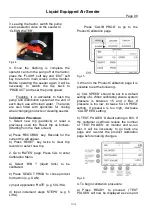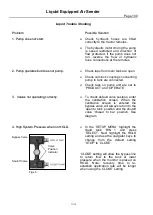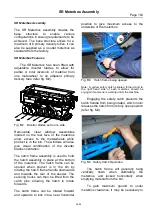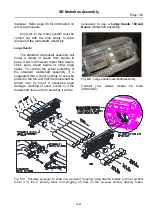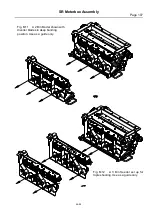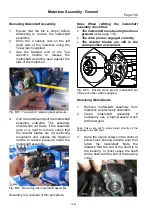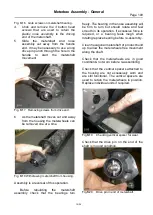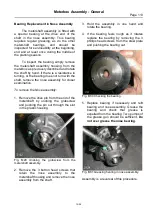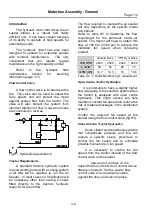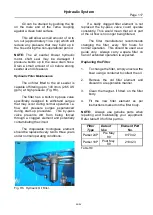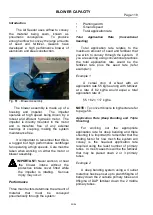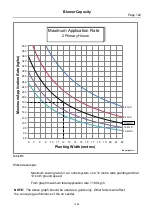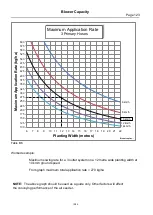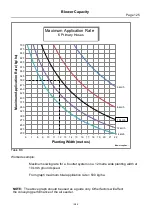
Meterbox Assembly - General
Page
111
12/09
confirm that the sleeves have been
fitted correctly.
Removal of the reducing cover plates is a
reversal of this procedure.
NOTE:
Do not use reducing sleeves in a bin
metering fertiliser or large seeds. Damage
may occur to the sleeves and meterwheel
assemblies.
High and Low Rate Sprocket Ratio
The Ground Drive and VRT Hydraulic Drive
metering systems use a different method
and reason for changing sprocket ratios.
Refer to the relevant sections (page 63 or
77) in this manual for further information.
Fig. M24 Sprocket Ratio being changed.
Blocking Air Flow
The meterboxes have been designed to run
4 or 6 primary hoses as standard. However,
the meterbox is flexible enough to enable
many
variations
in
its
metering
configuration. In the case of the 4 outlet
meterbox configuration, it can be used as a
3 outlet machine to suit narrow planting
widths, or as a 2 outlet system to perform
wide-row planting (common for summer
crops).
It may be necessary to fit plugs to the
unused conveying tubes to ensure airflow
has been controlled and restricted. Plugs
are fitted from the inside of the meterbox.
The plugs should be fitted to all meterboxes
and the primary hose coupling assembly
(refer figure M9 on page 95).
Airflow turbulence will occur inside the
meterbox if a plug has been incorrectly
located. This turbulence may create uneven
or excessive material flow when sowing light
seeds
or
product
at
extremely
low
application rates.
To fit the plugs, first open the meterbox
hatch. Firmly press the red plug, as supplied
with the seeder, into the inlet tube towards
the blower as shown in figure M25. The
plug’s placement must prevent air from
entering the meterbox.
Fig. M25 Meterbox Cross Section on a Rear
Tow Air Seeder. Reverse the plug
location on Front Tow Seeders.
VRT Hyd. Motor Direction of Rotation
The VRT hydraulic motor must rotate in the
correct
direction
to
ensure
reliable
performance during operation.
Fig. M26 VRT Hyd. Motor Rotation.


